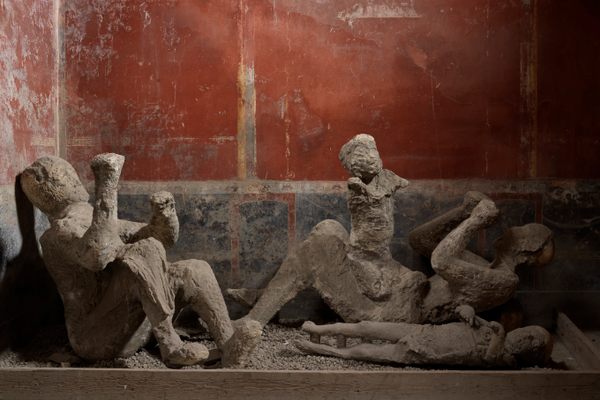
The Italian Streets That Don’t Exist on Any Map
How a system designed for circus performers and traveling salesmen helps homeless people access services.
In central Bologna, there’s a street with no numbers called Via Mariano Tuccella. Hundreds of people live there, but you wouldn’t be able to find it on a map. Dozens of people, who may not even know each other, all live at the same address in Turin: 1 Via della Casa Comunale, while in Rome, more than 19,000 people live on Via Modesta Valenti. But even the residents wouldn’t be able to tell you what the street looks like.
They are all examples of the “invisible” streets found in almost every major town across Italy and are mostly unknown to people without an address there. The vie fittizie, or fictitious streets, are a hand-me-down from the post-war era, when local authorities invented imaginary addresses as a way of linking the population to the land.
If you type Bologna’s “Via Mariano Tuccella” into Google, however, there is a different address that comes up: the one for the headquarters of Avvocato di Strada, a national charity that provides free legal aid to people experiencing homelessness, located on a narrow, graffiti-scrawled street in the center of Bologna that is actually named Via Malcontenti.
Federico Sibillano has been volunteering as a pro bono lawyer at Avvocato di Strada for six years and is an expert on the vie fittizie. He’s tall and softly spoken, folding himself around a small Formica table in the café where we meet.

He explains that the concept of a civilian register was introduced in Italy in 1864, when Italy was still a kingdom. “After the Second World War, it was developed further. It counted how many people were on Italian territory, a bit like a census,” he says. “It was a way of knowing who was alive or dead and enabled local authorities to provide the services that were needed, according to the size of the population.”
This abstract concept of residency works like a “miniature citizenship,” according to Sibillano. But the state’s new requirement to register one’s address posed a problem for people who didn’t fit into neat categories. Without a fixed address, people who traveled for work, like traveling salesmen or circus performers, weren’t able to access local public services like healthcare.
“So the authorities invented this system of a made-up street, which doesn’t exist in real life but is in the city’s registry. You can call it anything—Nutella Street, for example, and next to ‘Nutella Street’ in the registry, you write the names of all the people who don’t have a fixed address but have an economic reason for staying in the city, like their circus coming to town,” says Sibillano.
Nowadays, Italy’s peculiar system of fictitious streets is used less for trapeze artists or lion tamers and more for people who are homeless or precariously housed. Homeless people can ask to be registered as a resident of a fictitious street, which gives them an official address that they can put on their ID.

“Registering your address with the authorities is absolutely fundamental for accessing all the rights established by our constitution,” says Romano Minardi, an advisor for the organization Anusca, which helps people with their civil registry status. “If you are not registered at a specific place, you don’t have voting rights, the right to healthcare, social rights or even identity rights. If you don’t have an address, from a legal point of view you don’t exist. You’re a ghost.”
Italy’s fake streets are a way of rendering homeless people visible again. But the Italian system of linking identity to place—even non-existent places—also comes with unbending rules that can trip up people in difficulty. Sibillano tells me about a case that he’s been following, that of a 70-year-old Italian man who lost his house after losing his job and has been homeless ever since. He moved into an abandoned house in Bologna but cannot be registered at that address because he has no legal right to be on the property.
“He’s fixed up the house and has even made a vegetable garden, growing tomatoes, aubergines and courgettes. He refuses to be followed by social services or placed in a home because he says he doesn’t need it. He lives quietly and only eats what he grows,” Sibillano says. The man asked to be registered on the city’s fake street, but his request was denied because he refuses state help. Now he’s in a kind of legal limbo where, despite being an Italian citizen, he has no rights because he has no official residence.
Italy has roughly 237 fake streets, from Trieste in the north to Palermo in Sicily, yet most Italians are unaware of them. Among Avvocato di Strada’s ongoing battles with town halls is over how the streets are named. In some cities, like Bologna and Rome, the street is named in homage to a homeless person. Rome’s via fittizia is named after Modesta Valenti, a homeless woman who died in the city’s main train station on January 31, 1983, after emergency services repeatedly refused to help her. Other fake streets have bland, administrative names, like Via del Comune (“Commune Street”) or Via dell’Anagrafe (“Register Street”), but some are flagrant in advertising their purpose.
“Some are called things like ‘Solidarity Street,’ ‘Charity Street,’ or, even worse, ‘Without A Fixed Address Street.’ It’s discriminatory, because it stops a homeless person from forgetting their state of poverty, and a person who reads that on their identity card will already be prejudiced against them,” says Sibillano. The system can also be a vehicle for discrimination: some communes deliberately try to avoid “building” a fake street in order to deter people that they don’t want to live in their town.
“Local authorities know that if someone asks to be registered on a fictitious street, it’s almost always going to be a person who needs social help,” explains Minardi. “They’re worried that this person will be an excessive burden on the town budget.”
“The more people there are in a municipality, the more services the municipality has to provide,” says Sibillano. “If my town has 110 residents, but 10 people live on a fake street, that means I have to provide services for 110 people, but only 100 people are paying taxes. So most towns try to avoid creating one. They are worried that it will encourage more people to come and take advantage of free services.”
As soon as someone asks an Italian town to be registered on a via fittizia, that town is legally obliged to create one—but it often doesn’t happen that way. “Building” a via fittizia requires a long administrative process involving different local councils. “Many towns simply never start the process,” Sibillano says. This is when Avvocato di Strada can step in, putting pressure on towns that are ducking out of creating one and reminding them of their legal obligations.
There are similar projects elsewhere in Europe helping homeless people get addresses. ProxyAddress in the UK duplicates existent addresses for homeless people, while France’s domiciliation procedure gives them an administrative address so they can receive post. But in Italy, one’s identity is inextricably linked to geography. Despite the system’s faults, the sprawling, patchwork map of invisible streets across the country presents an unusual solution that helps homeless people to claim their rights and be counted in the community in which they live.











Follow us on Twitter to get the latest on the world's hidden wonders.
Like us on Facebook to get the latest on the world's hidden wonders.
Follow us on Twitter Like us on Facebook